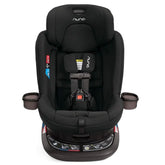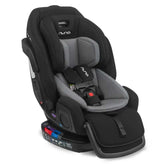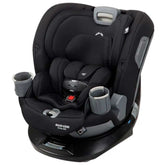Is Water Birth Right for You? Pros, Cons, & What to Expect

Updated 24 Dec 2024
If you think about the fact that a baby’s first nine months are spent comfortably nestled in a warm, wet environment, a water birth doesn’t seem like such a crazy idea. For some people, giving birth in a pool or tub feels like a gentler, more natural way of bringing their little one into the world. If a water birth is something you’re considering, it’s important to understand the benefits and risks associated with the process so that you can make the safest decision for you and your baby. Here’s what you need to know about water birth pros and cons.
What Is a Water Birth?
A water birth is when you spend a portion of your labor and/or delivery submerged in a birthing tub or pool filled with warm water. While it’s a popular choice among a number of mothers and is supported by many midwives, water birth is not typically practiced by obstetricians.
What Are the Benefits and Advantages of Having a Water Birth? Are Water Births Less Painful?
While the American College of Obstetricians and Gynecologists does acknowledge certain advantages to laboring in water, they don’t advise it past the first stage of labor, leading up to when the cervix is fully dilated. They also do not recommend actually giving birth in water. According to ACOG, immersion in water in the first stage of labor may help reduce the span of labor. Laboring in water may also diminish the need for epidurals or other spinal anesthesia.
One study showed that people who labor in water may also have a lower C-section rate (13.2 percent versus 32.9 percent). Additionally, people who have water births noted less stress incontinence 42 days after delivery than those who delivered on land, 6.1 percent versus 25.5 percent, respectively. More research is necessary to substantiate these conclusions.
Laboring in water during the first stages of childbirth (before pushing the baby out) may also reduce perineal trauma, reduce the potential for an episiotomy, help you conserve your energy, and give you an overall greater sense of control. You may simply find it more relaxing to begin labor in the warm water.
What Are the Disadvantages of Having a Water Birth?
Because your infant isn’t breathing inside the womb, they shouldn’t actually draw their first breath until they come out of the water and into the air. However, the American College of Obstetricians and Gynecologists still advises against delivering in the water, citing meconium aspiration and drowning as potential risks if the baby does try to breathe underwater.
Though rare, babies delivered in water are also at risk for developing infections or other diseases. Legionnaires’ disease, for instance, is a severe and sometimes fatal disease caused by inhaling droplets of water that contain Legionella bacteria. Other risks include:
- difficulty controlling baby’s body temperature
- possibility of umbilical cord harm
- respiratory distress for the infant
- asphyxia and seizures
Due to the risks to the infant during the delivery process, ACOG advises that laboring in water is alright, but when it comes time to push, delivery should happen on “dry land.”

Who Can Have a Water Birth
Generally, ACOG suggests that laboring in water be offered to women who are between 37 weeks to 41 weeks, 6 days gestation. There are additional recommendations, including having a low-risk pregnancy, clear amniotic fluid, and a baby in a head-down position.
Water births may not be advised for people who have the following complications or symptoms:
- those who are in preterm labor, have a history of difficult labor, or have had two or more previous c-section deliveries
- a chronic medical issue, like hypertension, preeclampsia, diabetes, or herpes (which spreads more easily in water)
- carrying multiples
- baby is breech
- fever of 100.4 °F (38°C) or higher
- extreme vaginal bleeding
- history of shoulder dystocia
- the need for continuous electronic fetal monitoring
How to Prepare for a Water Birth
A water birth can happen at your home, the hospital, or a birthing center. Hospitals tend to be the least equipped to handle a water birth so if you’re planning to deliver in a hospital and want to labor in water, do your research. You may be able to get permission to bring in a purchased or rented birthing pool.
If you’re looking into home water birth pros and cons, the good news is that you can always take advantage of your own tub during the first stages of labor (even if you ultimately decide to head to the hospital). You may also consider bringing in a birthing tub that’s large enough for you and your coach or partner.
When labor begins, contact your healthcare provider first, then fill your tub and wait for them to get there before entering the tub. After you’re in, adjust the water temperature so that it’s between 95 and 100 degrees F and no higher than 101 (otherwise your body temperature could rise, causing the baby's heart rate to increase). You’ll need to stay hydrated so keep plenty of bottled water nearby, as well as a few cool washcloths your partner can use to dab your face and neck. Your midwife will observe your infant’s condition with an underwater Doppler device.
During your tub experience, you’ll see an increasing variety of “stuff” floating in the water as you near the final stages of childbirth. Mucus, bloody show, and feces are all normal. Your doula or midwife will help remove them with a scooping net.
After the baby is born, the midwife will first attend to you and the infant. Afterward, they’ll use a pump to empty the tub into your toilet and throw away the hygienic liner. The tub should be scrubbed with bleach prior to storage or being returned.
How to Learn More About Water Births
To learn additional details about water births, talk with your healthcare provider about the different options available in your particular area. You can also find more information or locate a midwife using these resources:
Consider talking with family or friends who’ve had water birth experience. Learn what worked well for them and what they would’ve done differently. What’s essential is selecting a birthing option that works best for you and your baby. You may also want to spend a little time thinking about backup plans in case complications arise as your pregnancy or labor advances.










